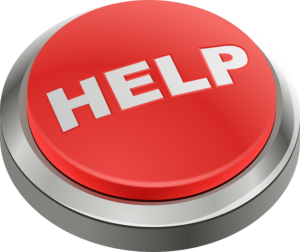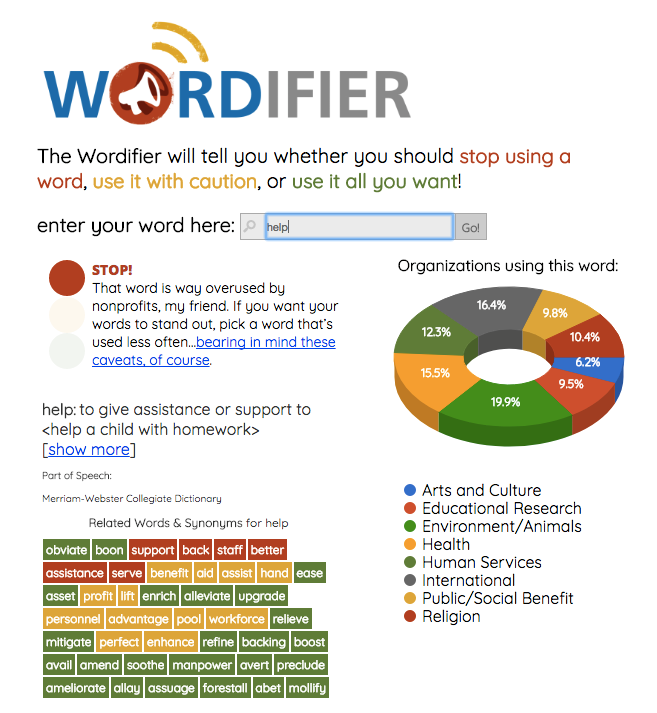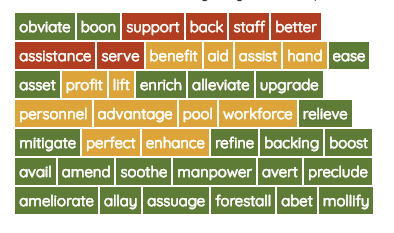Help is such a core part of our non-profit identity. So, how can we can possibly stop overusing this word? Read on to find out in our latest installment of Word of the Month.
“Help!” It’s what the non-profit sector is all about, right? We help the environment, we help children, we help the homeless. We ask folks to help us carry out our mission with support, donations, and volunteer hours.
With all this helping going on, I’m sure you’re not surprised to learn that according to our research, “help” is high on the charts of the most commonly-used word by non-profits. (Others include need, more, support, and please. Notice a trend?)
We also know that overused words don’t do anything for our mission. By using the same words that every other non-profit uses, our mission statements and other communications get lost in the abyss of overlooked messages.
This is why The Wordifier gives us the red light on the word “help”.
Nonetheless, many organizations continue to use this word, and use it heavily. Here are a few examples of mission statements I discovered by googling some well-known non-profits:
To help people worldwide where the need is greatest, delivering emergency medical aid to people affected by conflict, epidemics, disasters, or exclusion from health care. – Doctors Without Borders
To alleviate suffering, poverty and oppression by helping people build secure, productive and just communities. – Mercy Corps
To help more moms have full-term pregnancies and healthy babies. – March of Dimes
With helping being such a core part of our non-profit identity, you may wonder how we can possibly stop overusing this word and make our mission statements and other messaging more remarkable. What’s a non-profit to do?
Well, let’s start by looking back to help’s origins.
Not surprisingly, the word help dates back pretty far, stemming from the Old English helpan. At that point in time, it was exclusively a transitive verb, meaning it was required to have a direct object tied to it. For example, you couldn’t just helpan in general, you had to helpan something.
In the 13th century, this changed, and the intransitive use emerged, meaning to “offer aid or assistance”. Help moved out of the realm of an action-packed verb, and into more general, conceptual realm.
And this is my advice to non-profits: Think of help not as an action word, but as a concept. When you frame it that way, you’ll see that there are other words that will get your helping point across in a stronger way.
Luckily, The Wordifier offers alternatives to any given word that are not overused, and therefore will make your mission and messaging shine! Pay special attention to the words in green, as those are the least commonly used by non-profits. 
You’ll also notice that these words can pinpoint an exact action in a way that the generic “help” cannot. “Ease” has a much different meaning than “boost” or “amend”, yet all three can be used in place of a “help” depending on the context.
Here are a few examples of non-profits successfully replacing help with a more descriptive, yet similar word.
To defend and preserve the individual rights and liberties guaranteed by the Constitution and laws of the United States. – ACLU
To connect people through lending to alleviate poverty. – Kiva
To create, find and support programs that directly improve the health and wellbeing of children. – Ronald McDonald House.
Take a stab at removing help from your own communications, and share your results with us @ClaxonMarketing. I hope this post enriched your view of non-profit word choice, and will upgrade your non-profit’s future messaging!
Want to upgrade your non-profit’s messaging even more? Check out our online training through Claxon University.